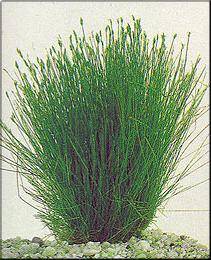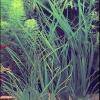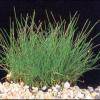Eleocharis acicularis
Scientific name: Eleocharis acicularis
Family: Cyperaceae
Maximum size reached under cultivation: 5 - 15 cm (1.97 - 5.91 inch)
014
Recommended pH range: 6.3 - 7
Recommended water hardness: 4 - 12°dGH (71.43 - 214.29ppm)
0°C 32°F30°C 86°F
Recommended temperature range: 15 - 25 °C (59 - 77°F)
Preferred propagation method: Runners
Native to: Cosmopolitan
Growth rate: Slow
Recommended substrate: Fine gravel
Lighting requirements: Bright
Ideal placement in tank: Midground
Common Names
Needle Spike Rush, Dwarf Hairgrass
Origin
Eleocharis acicularis is widely distributed across Europe, Asia, North America, and parts of Central and South America. It typically inhabits shallow freshwater environments such as riverbanks, ponds, marshes, and wet meadows. This plant thrives in slow-moving or still water and can survive both submerged and emersed conditions.
Growing Conditions
This species is best known for forming lush green carpets in aquariums. It prefers being grown fully submerged, although it can also adapt to emersed conditions in paludariums. Under water, its thin, needle-like leaves grow to 5–15 cm (1.97–5.91 inches) tall and gently sway in the current, providing a natural, grassy look.
Eleocharis acicularis requires bright lighting to maintain compact, horizontal growth. Without adequate light, the plant may grow vertically and lose its carpeting effect. It grows best in fine gravel or nutrient-rich substrates, with a pH between 6.3 and 7 and water hardness from 4–12 dGH. The ideal temperature range is 15–25°C (59–77°F). Supplementing with CO2 can improve growth but is not strictly required.
Planting Area
While it is often categorized as a midground plant due to its height, Eleocharis acicularis is most commonly used in the foreground of aquariums to create a soft, grassy carpet. It also works well in nano tanks and shallow setups where it can act as a transition between foreground and midground areas.
Propagation
This plant propagates primarily via runners (stolons) that spread horizontally beneath the substrate. New shoots emerge from these runners and gradually form a dense mat. It can also be propagated by dividing established clusters and replanting them. Under optimal conditions, lateral shoots will naturally spread without much intervention.
Difficulty
Eleocharis acicularis is considered an easy-to-moderate plant depending on the setup. It is low-maintenance in well-lit tanks and provides great visual appeal. While slow-growing compared to some carpeting plants, it offers excellent coverage with time and patience.
Short Description
Eleocharis acicularis, commonly known as Dwarf Hairgrass, is a delicate, grass-like plant ideal for aquascaping. Its ability to grow both submerged and emersed makes it suitable for aquariums, paludariums, and wetland-style layouts. In nature, it often grows in shallow water and forms dense colonies through runners. With proper lighting and stable water conditions, it creates a natural carpet effect that enhances the aesthetics and functionality of any planted tank.
Frequently Asked Questions (FAQ)
-
Can Eleocharis acicularis be used to create a carpet in my aquarium?
Yes! When provided with bright lighting, nutrient-rich substrate, and adequate CO2 (optional but helpful), this plant will spread via runners and create a dense green carpet over time.
-
Does it require CO2 injection to thrive?
CO2 is not strictly required, but it greatly improves growth speed and density. Without CO2, the plant grows more slowly and may not carpet as effectively.
-
Can I grow Eleocharis acicularis emersed?
Yes, this plant grows well both submerged and emersed. It’s commonly used in dry-start methods and paludariums, where it will often produce small flower spikes.
-
How long does it take to form a full carpet?
With optimal lighting, CO2, and nutrients, a full carpet can develop within 6–10 weeks. Without CO2, it may take several months or more.
-
How do I propagate Hair Grass?
It propagates through runners. As the plant grows, it sends out horizontal shoots that root and form new tufts of grass. These can also be manually separated and replanted.
-
Is it suitable for nano tanks?
Absolutely. Due to its compact size and grass-like look, Eleocharis acicularis is a popular choice for nano tanks, especially when used in the foreground.
-
What causes melting or browning tips?
This can be caused by inadequate lighting, poor nutrient availability, or unstable water parameters. In newly planted setups, some melting is normal as the plant adjusts.

 Cyperus alternifolius
Cyperus alternifolius Cyperus helferi
Cyperus helferi Eleocharis vivipara
Eleocharis vivipara